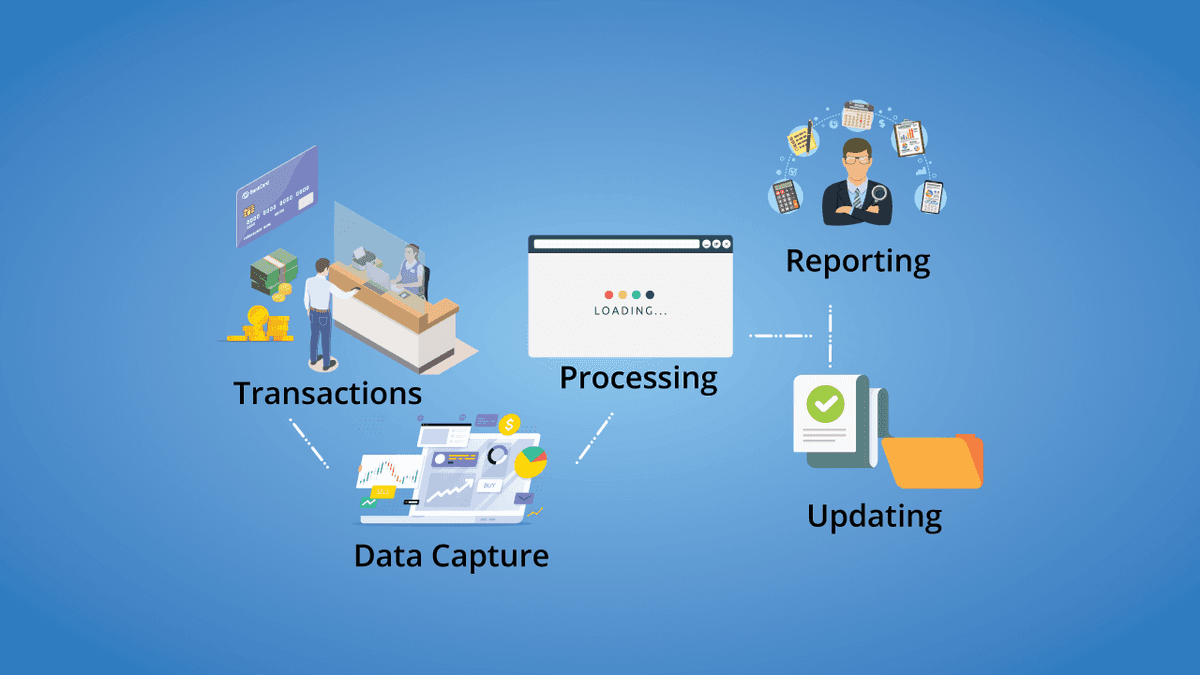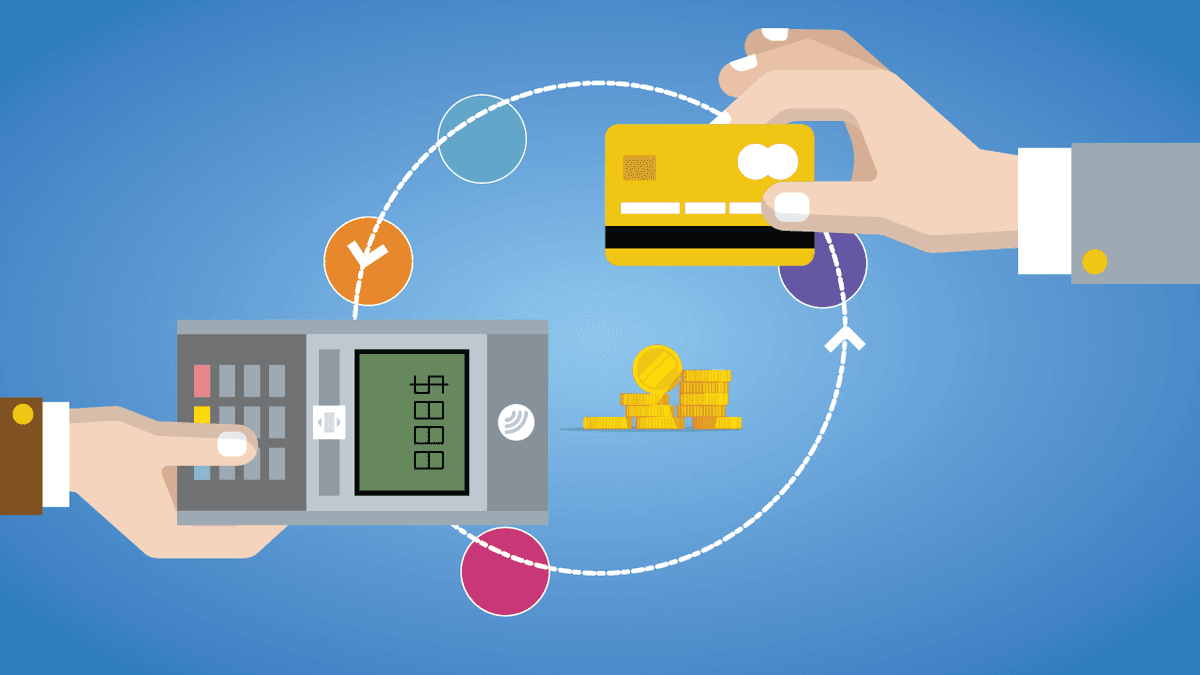- Home
- Blog
- Oracle Tuxedo
- What is Transaction Processing System?

What is a Transaction Processing System?
Importance of Transaction Processing S What is a Transaction Processing System? ystem
Different Types of Transaction Processing System?
What are the Main Features of a Transaction Processing System?
How does a Transaction Processing System work?
What are the primary components of a Transaction Processing System (TPS)?
What are the main functions of a TPS(Transaction Processing System)?
TPS or Transaction processing system is an advanced form of information system that allows businesses to handle and manage transactions across the globe. It is a sophisticated revenue management system that generates desired forms of outputs in the form of reports and summaries with the given inputs which may be cash memos, customer orders, invoices, etc.
What is a Transaction Processing System?
It is an information processing system that captures and processes every single transaction that takes place within the organization. These transactions include activities involving collection, retrieval, modification, and all other sets of activities that trigger the retrieval of all transactions. A transaction processing system is highly reliable, consistent, and efficient. Transaction processing systems may also be referred to as real-time processing systems.
Transaction processing is often compared with batch processing. These two are fundamentally different processing systems that vary in their speed, processing manner, and accuracy of the events.
| If you would like to enrich your career in Transaction Processing System Development, then visit Mindmajix - A global Online training platform " Oracle Tuxedo Online Training" This course will help you to achieve excellence in this domain |
Since a TPS is a real-time processing system, all the events and transactions that occur in the organization or over the system are processed immediately causing no delay. It is one of the most used technologies in all online transactions and is called an Online Transaction Processing System (OLTP).
Importance of Transaction Processing System
An ideal TPS is crucial in taking care of the following two aspects:
1 Handling and Managing Operations
TPS is an excellent technology in handling and managing the everyday operations of any given organization. It allows multitasking at a wider level with an unmatched ability to process thousands of transactions at the same time without any delay or break-down.
2 Tapping the Raw Markets
TPS is a carrier tool for any business since it gives businesses the freedom to operate in different segments of society by working remotely. This operability gives the businesses an opportunity to tap, exist and grow in newer markets that are raw and full of opportunities.
Different Types of Transaction Processing System?
There are basically two types of transaction processing:
1 Batch Processing
As the name suggests, the processing of transactions takes place over batches. These batches can be customized as per organization requirements. For example, a company may want to process the payroll of its employees in a weekly or bi-weekly manner, thus the batches of employee salaries will be processed over a span of one and two weeks respectively. There is generally a time delay in this type of processing.
2 Real-time Processing
Under real-time processing, every single transaction is processed with immediate effect. There is no time delay in the real-time processing system.
What are the Main Features of a Transaction Processing System?
A transaction processing system has the following features:
1 Reliability
One of the biggest advantages of using a transaction processing system is that it is a highly reliable system that manages and handles the important transactions of an organization. Since the revenue system is completely dependent on the TPS, it is crucial to the seamless working of any organization.
2 Fast Response
The biggest differentiating factor between a real-time processing system and a batch processing system is its speed and accuracy. Rapid response time ensures that your customers do not have to wait for their transactions to be processed.
3 Similar Structure and Integrity
There are certain features of the TPS that need to stay intact to work the way it is supposed to. In order to ensure that the processing system works exactly the same way for every organization every single time, the structure must stay intact.
4 Authorised Control
A good and ideal TPS allows only the authorized personnel to conduct the processing activities anytime. With the recent advancements, the newer versions even allow authorized personnel to gain access from a remote location as well but with high and stringent security checks.
5 User-friendliness
A good TPS must be easy to use and user-friendly in order to promote increased usage of it. An easily operable TPS would also ensure there are minimal errors in the inputting data and conducting the processing activities.
| Check out updated Oracle Tuxedo Interview Questions |
How does a Transaction Processing System work?
The working of a transaction processing system can be conducted in two ways:
1 Processing in a Batch
Batch processing is the traditional way of processing transactions. In this method, the transactions are collected, combined, and grouped in batches. These batches can be identified based on several parameters. Generally, the FIFO method is followed to do so. These batches are collected and stored and can be processed at any time. There is usually some time delay in the batch processing method.
2 Processing in real-time
Real-time processing is a fruit of technological advancements. It was developed to cater to the needs to fast processing and real-time reflection of revenue entries for an organization. The time delay in the batch processing method accounted for a fair amount of loss in the revenues. Under this method, the transactions are processed in real-time and provide instant verification for the same as well. A real-time TPS can be accessed remotely as well over the cloud.
What are the Primary Components of a Transaction Processing System (TPS)?
Following are the 4 major components of an ideal TPS:
- Inputs: The source documents fetched from the transactions made by customers or organizations and contain information regarding money. These may be bills, invoices, coupons, customer orders, etc.
- Outputs: The documents generated after the complete processing of the inputs are called outputs.
- Processing units: Processing refers to the step where the information provided at the input step is broken down into segments to be processed into relevant output.
- Storage: The location in the memory where all the desired information is stored is called memory. Generally, the information is stored in the form of ledgers.
What are the Main Functions of a TPS(Transaction Processing System)?
The main functions of a TPS are conducted by the above-mentioned primary components. These include:
- Input functions: Securing and inputting the data of the transactions that have taken place
- Output functions: Producing the report and record of the input data to be used for future references and validating the transaction
- Storage functions: Storing the data from both input and output operations and ensuring the availability of data for operations like information access, retrieval, sorting, and updating.
- Processing functions: Computing, calculating, sorting, and defining the input data to get the desired results.
Examples of Transaction Processing System

There are several examples of transaction processing systems we use in day-to-day life. Some of these are:
- Hotel reservation: It is extremely useful in reservations of all types wherein the customer needs an instant verification of the request.
- Cheque Clearance: Like in physical banks, all the cheques are collected in dropbox and processed together as a batch with a certain delay (batch processing).
- POS(Point of Sale): IT reduces the work of sales executives as once the product is tagged and the related information is entered into the system, the executive only needs to scan the code and the complete information will be withdrawn from the database.
Transaction Processing System Advantages & Disadvantages
Advantages of using TPS
- It is a highly cost-effective and fast solution to all the revenue-related operations of any given organization.
- It works through a highly stable and reliable database that stores and reflects the information as and when desired without any risk of information loss.
- It allows for a quick recovery from any operational failure causing a very little delay in the transaction processing.
- It allows remote functioning giving the freedom of free operation to businesses who want to grow across the globe.
- It can be used both in a real-time manner and batch-processing manner.
Disadvantages of using TPS
- Every business has different needs that must be dealt with exclusively. This calls for designing a customized solution for every single business that has some specific requirements.
- Though it is a cost-effective solution, the initial cost of setting up and installation can be on the higher side.
- Even with a highly sophisticated setup, you may need to deploy a large number of workforces for data input, managing and recording inventory, etc.
- Though TPS is designed for handling a lot of data and work, overloading may lead to a system crash.
- You need to have a certain specification of the hardware for TPS software to work smoothly.
Conclusion
Using the Transaction Processing System has revolutionized the way businesses were conducted across the globe. This infotech has eased out the revenue management system across organizations through its sophisticated and delicately designed operations. Learning designing and coding of Transaction Processing System can open up several opportunities for budding technology enthusiasts. To know more about TPS, reach out in the comments section below.
 On-Job Support Service
On-Job Support Service
Online Work Support for your on-job roles.

Our work-support plans provide precise options as per your project tasks. Whether you are a newbie or an experienced professional seeking assistance in completing project tasks, we are here with the following plans to meet your custom needs:
- Pay Per Hour
- Pay Per Week
- Monthly
| Name | Dates | |
|---|---|---|
| Oracle Tuxedo Training | Jan 10 to Jan 25 | View Details |
| Oracle Tuxedo Training | Jan 13 to Jan 28 | View Details |
| Oracle Tuxedo Training | Jan 17 to Feb 01 | View Details |
| Oracle Tuxedo Training | Jan 20 to Feb 04 | View Details |

Anjaneyulu Naini is working as a Content contributor for Mindmajix. He has a great understanding of today’s technology and statistical analysis environment, which includes key aspects such as analysis of variance and software,. He is well aware of various technologies such as Python, Artificial Intelligence, Oracle, Business Intelligence, Altrex, etc. Connect with him on LinkedIn and Twitter.





